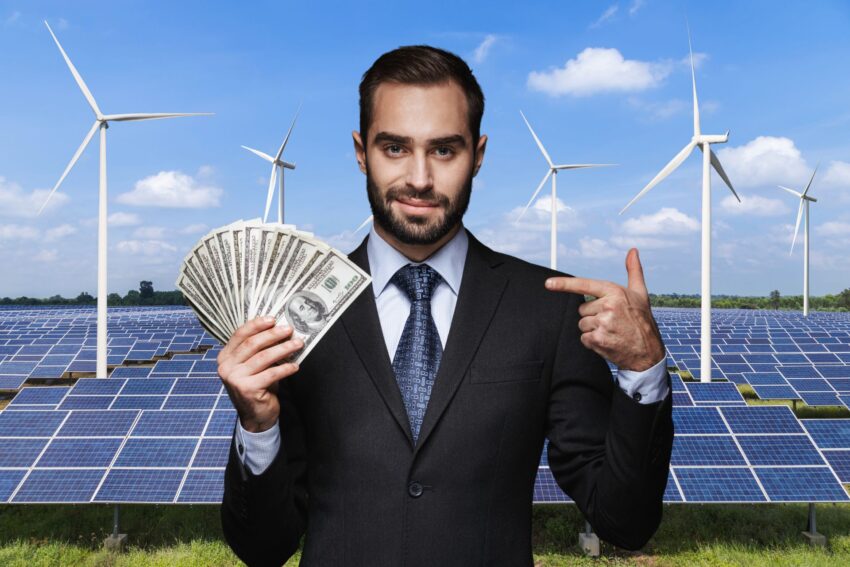In the realm of environmental policy, green subsidies have been heralded as an absolute necesitty solution for combating ‘climate change.’ However, a deeper dive reveals what many are now calling the “Green Subsidy Scam.”
The Green Subsidy Scam
If you haven't caught on to this scam by now, you are just Intentionally Ignoranthttps://t.co/TRr2e4vbRL pic.twitter.com/PxWpBBTNjp
— Will Chase (@WillChase007) September 5, 2024
Critics argue that these subsidies are not primarily about saving the planet but about funneling taxpayer money into the pockets of politically favored businesses and investors. For instance, the Inflation Reduction Act, touted for its environmental benefits, has been criticized for potentially costing taxpayers $1.2 trillion, far exceeding initial estimates.
This money, rather than fostering genuine innovation, often ends up in the hands of those who are adept at navigating the subsidy landscape. These subsidies are more about political favoritism than environmental stewardship. Projects are often selected not for their environmental impact but for their ability to secure subsidies, turning the green initiative into a lucrative game for those in the know.
How the scam works:
1) Wall St progressives help get Biden elected.
2) Biden, in return, passes a green spending spree under false pretenses.
3) Costs are quietly revised up by 300%.
4) $1.2T in taxpayer funds flow into the pockets of green activists.https://t.co/M8FFlpCvBl
— Will Hild (@WillHild) March 24, 2023
The real cost of these subsidies often falls on the average citizen. Increased taxes or higher energy prices due to inefficient green projects mean that the public pays twice—once through taxes and again through higher costs for goods and services.
Green subsidies can distort market dynamics, leading to an over-reliance on technologies that might not be economically viable without government support. Some projects rely on taxpayer money for nearly 90% of their profits, raising questions about long-term sustainability and the risk of future bailouts. This not only misallocates resources but also might slow down the adoption of genuinely superior technologies by artificially propping up less efficient ones.
Very good article (long read, but worth it)
"The green economy isnt a capitalist economy, where companies compete with one another to produce the best product at the lowest price and countries attract businesses and talent based on their comparative advantages; instead, it is…
— Judith Curry (@curryja) September 29, 2023
Some analyses suggest that a significant portion of green spending has not yet translated into tangible environmental improvements or energy independence, with less than 17% of allocated funds spent, indicating slow implementation or ineffective policy execution.
The mention of past debacles like Solyndra, where taxpayer money was lost in a green energy project that went bankrupt, serves as a stark reminder. These failures highlight not just poor investment decisions but a systemic issue where the promise of green technology often overshadows practical economic viability.
Here Come the Green Bailouts
Biden's "Inflation Reduction Act" handed over $400 billion to crony "Green" projects.
Many are just subsidy farms, with taxpayer money making up "nearly 90%" of profits.
We've been here before: Obama's $535 million Solyndra turned out to be a scam… pic.twitter.com/qESBGOiG5L
— Peter St Onge, Ph.D. (@profstonge) April 22, 2024
Critics also point out that while the U.S. spends heavily on green subsidies, other countries might not follow suit, potentially putting the U.S. at a disadvantage in global trade due to increased costs. Another issue is the main beneficiary of some of these schemes is China, which produces the majority of the solar panels being installed in the United States, undercutting American competitors. Meanwhile, China is a country that burns coal as its most prominent main energy source, and this coal is getting shipped in record amounts from North America as we offshore our emissions.
The spending on green initiatives, especially as highlighted in the run-up to the 2024 election, faces criticism for not delivering immediate, noticeable benefits to the public, which could impact political support for Kamala Harris and her Green New Deal, which has been strategically shuffled to the sideline as a hot-button issue. It’s not a strategic talking point when trying to appeal to voters who are concerned with rising energy costs due to these ‘green’ policies.
Last year, governments spent $1.8 trillion on the green transition.
If solar and wind really were cheaper, shouldn't they replace fossil fuels without the need for massive subsidies?
And still, emerging economies keep adding more new power from coal.https://t.co/V257Lgp3w9 pic.twitter.com/lHeeI2TcUT
— Bjorn Lomborg (@BjornLomborg) April 10, 2024
The more these issues come to light, the more public skepticism grows. People are beginning to see these initiatives not as steps towards a cleaner and more efficient future but as elaborate schemes for wealth redistribution under the guise of environmentalism. The question that has to be asked is, are the architects of the “Green Subsidy Scam” unrealistic idealists, or are we witnessing a new form of economic and political manipulation dressed in green? Evidence appears to point to the latter.
When it comes to how vast sums of taxpayer money is spent, we must advocate for transparency, efficiency, and genuine environmental progress over what appears to be a costly and inefficient subsidy system. We cannot afford to be led down the wrong path this time, like we were with Solyndra, especially with so much at stake. The path to a healthier, more efficient world should not be paved with the gold of taxpayer money misused but with innovation, efficiency, and real environmental benefits that stand on their own merit, not government handouts.


